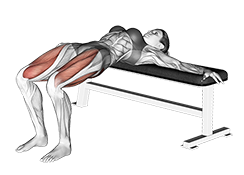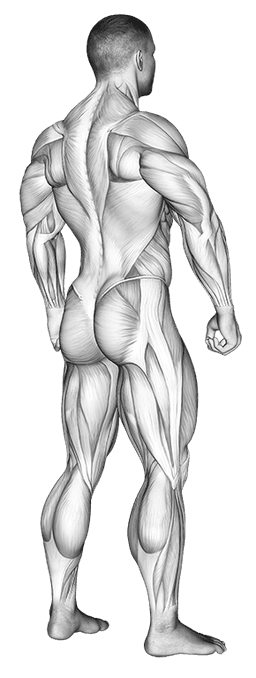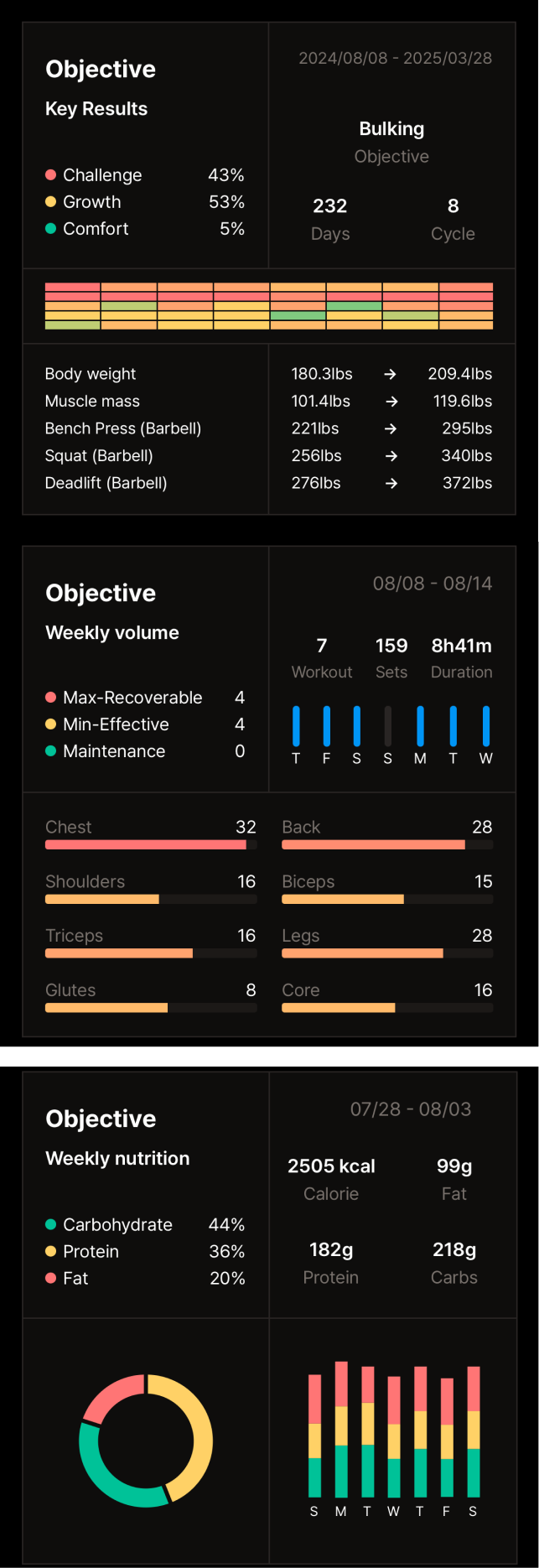
Hip Thrust (Bodyweight)
A glute-focused exercise that builds strength and improves hip extension. It's performed using only bodyweight, making it accessible for various fitness levels.
Muscle Targets Visualizer
Muscle Targeting Visualizer



Primary Muscle
Secondary Muscles
Strength Level Tracker
Track Your Progress Like a Pro
Hip Thrust (Bodyweight)
Average of all records in a cycle
Step-by-Step Instructions
1. Starting Position
Sit on the floor with your upper back against a bench or sturdy surface. Your feet should be flat on the floor, hip-width apart.
- Keep your feet at a comfortable distance
- Ensure your back is firmly planted against the supporting surface
2. Shoulder Placement
Place your upper back firmly against the bench, with your shoulder blades tucked in and chest slightly lifted.
- Avoid straining the neck
- Don't place the upper back too high
3. Hip Extension
Engage your core, then squeeze your glutes to lift your hips off the floor. Keep your body straight from shoulders to knees.
- Squeeze your glutes at the top of the movement
- maintain a steady and controlled movement
4. Controlled Descent
Slowly lower your hips back down to the starting position, maintaining control.
- Focus on controlled movements
- avoid dropping your hips suddenly
5. Repeat
Repeat the movement for the desired number of repetitions.
- Maintain proper form throughout all repetitions
- Use a controlled and smooth range of motion
Form Tips
✓Glute Activation
Focus on squeezing your glutes throughout the entire range of motion to maximize glute activation.
✓Controlled Movement
Avoid jerking or using momentum; control the movement at all times to prevent injury and optimize muscle activation.
✓Maintain a Straight Back
Keep your back straight to protect your spine and ensure you're working your glutes instead of your lower back.
✓Proper Foot Placement
Adjust foot placement as needed; a slightly wider stance might be more comfortable and effective for some individuals.
Common Mistakes
Arching the lower back excessively
Engage your core and glutes more forcefully to stabilize your spine and lift your hips using the glutes, not the lower back.
Not fully extending the hips at the top of the movement
Consciously squeeze your glutes and push your hips fully up towards the ceiling, focusing on complete hip extension.
Using momentum instead of controlled movement
Slow down the movement, focusing on controlled concentric (lifting) and eccentric (lowering) phases.
Poor shoulder support on the bench
Ensure your upper back is firmly planted against the bench, with your shoulder blades squeezed together.
Knees collapsing inwards
Actively push your knees outwards to maintain proper alignment and protect your knee joints. You may need to adjust foot width.
Alternative Exercises
- Banded Hip Thrust
- Hip Thrust with weight plates
Complementary Exercises
- Glute Bridges
- Romanian Deadlifts

